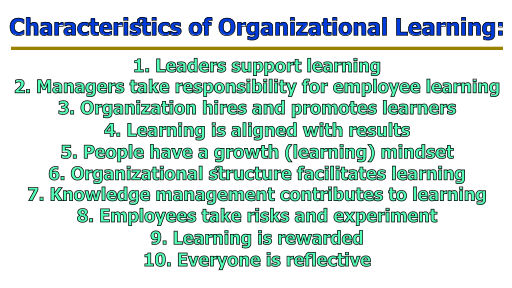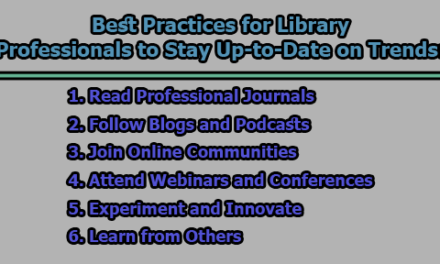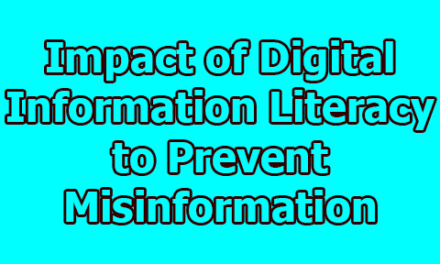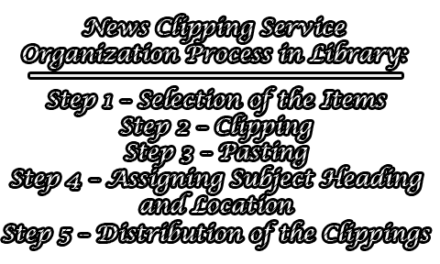An organization that is learning is entirely different from a regular organization. To enable both the organization and its employees to thrive in the face of change, learning organizations create an environment for people to learn more quickly and efficiently. Learning organizations are necessary for effective talent management, especially when it comes to empowering employees to learn and maximizing the abilities and results of your resource pools. The organizational culture is flexible, hence it needs specific components to become ingrained. In the article, we are going to know about the Characteristics of Organizational Learning and Dominant Modes of Organizational Learning.
Characteristics of Organizational Learning:
Some of the basic characteristics of organizational learning are being with a brief description:
1. Leaders support learning: The message from the CEO, senior executives, and other key leaders in the organization is that continuous learning by individuals, teams, and the whole organization is valued and expected. Leaders communicate that learning can happen in many different ways: through formal face-to-face and online instruction; formal and informal, on-the-job activities; and social interaction.
2. Managers take responsibility for employee learning: Managers encourage their employees to acquire new knowledge and skills and develop competencies to make themselves more valuable to the organization. Managers provide opportunities to learn, practice that learning, and apply learning on the job. Managers hold employees accountable for learning and hold themselves accountable for developing their direct reports.
3. Organization hires and promotes learners: Recruiters, and other HR staff look for people who are self-motivated learners, are always seeking opportunities to acquire new knowledge and skills, learn from their successes and failures, take risks for the purpose of learning, and continue to develop themselves. The organization selects new employees and promotes current employees who demonstrate initiative in learning and growing.
4. Learning is aligned with results: Employees and their managers can clearly see how acquiring specific knowledge and skills will contribute to the success of the organization. It’s not learning for learning’s sake or learning because “we’ve always done it that way”, but learning because that’s what will help the organization achieve its strategic goals.
5. People have a growth (learning) mindset: Executives, managers, and employees believe that they and others can learn and grow within the organization. They believe that this potential is in everyone and can be unleashed by actively giving people the opportunity to acquire new knowledge and skills.
6. Organizational structure facilitates learning: Information flows freely throughout the organization. Leaders of work units feel free to communicate with each other. They provide assistance and peer-coaching to each other as needed. Employees are connected across departments and actively share successes, failures, and lessons learned. Other key stakeholders are brought into important decision-making and are respected for their input.
7. Knowledge management contributes to learning: Information is stored in an easily accessible place (hardcopy or in a database) that can be used by all employees to acquire knowledge that they need to be successful in their work. Employees can get the information they need when they need it for the purpose of improving organizational performance. Employees are constantly, creating, identifying, collecting, organizing, sharing, adapting, and using the information to help the organization become smarter.
8. Employees take risks and experiment: Leaders foster this behavior by recognizing the effort and the learning even if the results are unsatisfactory. Employees are not punished (e.g., pay cut, demotion, public humiliation, marginalization) for trying something new. On the contrary, this kind of behavior is encouraged. Failures, as well as successes, are treated as opportunities for learning.
9. Learning is rewarded: When employees acquire new knowledge and skills, this is recognized and applauded. When new learning is applied and contributes to improving the performance of the organization, employees are rewarded.
10. Everyone is reflective: Leaders, managers, employees, and other stakeholders take every opportunity to learn. Client contacts are immediately examined with the intention of learning and improving those contacts in the future. Tasks, events, processes, and committees are all viewed as opportunities for learning.
Dominant Modes of Organizational Learning:
Organizations acquire information/ knowledge through several processes. The processes are as follows:
- Congenital learning: The combination of the knowledge inherited at its inception and the additional knowledge acquired prior to its birth leads to congenital learning.
- Analytical learning: Learning occurs through the systematic gathering of information.
- Experimental learning: Organizations acquire some knowledge after their birth through direct experience.
- Synthetic learning: It emphasizes the synthesis of large amounts of complex information by using systems thinking.
- Vicarious learning: Organizations acquire some knowledge from other organizations- knowledge related to their strategies, practices, technologies, etc. Such learning occurs through professional meetings, trade shows, publications, vendors and suppliers, and the like.
- Interactive learning: Learning occurs from doing through the exchange of information.
- Grafting: Organizations frequently increase their store of knowledge by acquiring and grafting on new members who possess knowledge not previously available within the organization.
- Structural learning: Employees learn from the organization’s standard processes, rules, and procedures that specify the ways of performing tasks.
Finally, we can say that the learning organization is an existing management approach. It defines how an organization should activate in the ever-changing business environment Organizational learning is a continuous process of organizational change that implies innovation and development in manufacturing, services, client mind, etc. This procedure happens as a result of new knowledge that the organization acquires constantly.
References:
- Managing Human Resource Development: A Strategic Learning Approach 5th edition (2017) Written by Marius Meyer.
- Wang, C.L., and Ahmed, P.K. (2003). Organizational learning: a Critical Review. The learning organization, 10(1), 8-17.

Assistant Teacher at Zinzira Pir Mohammad Pilot School and College










